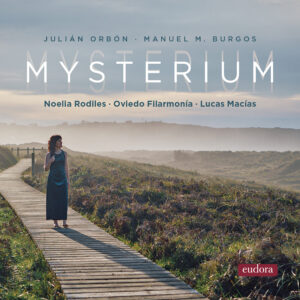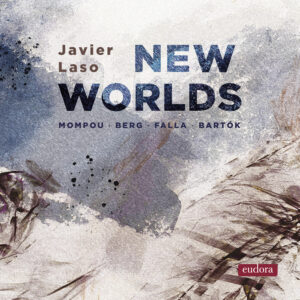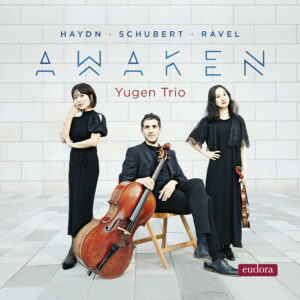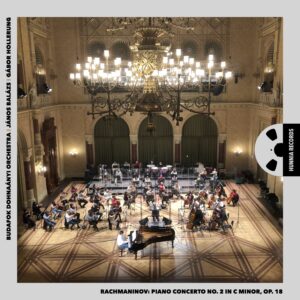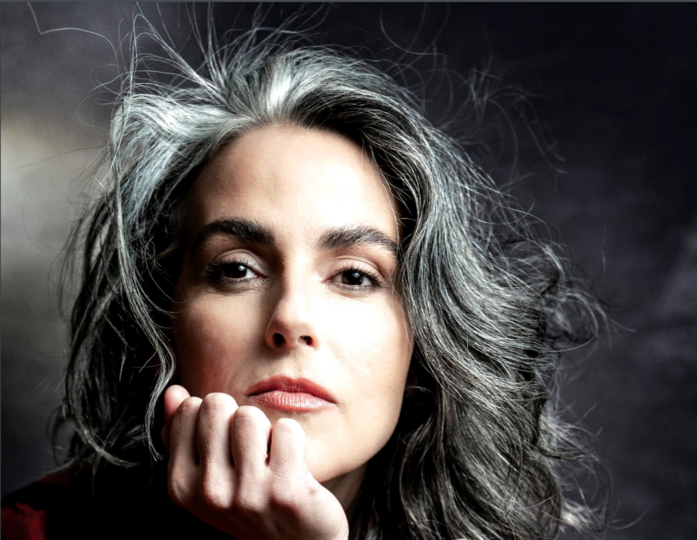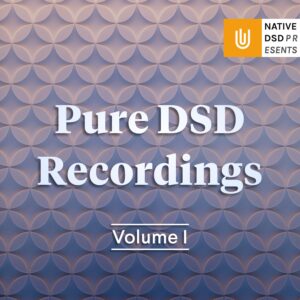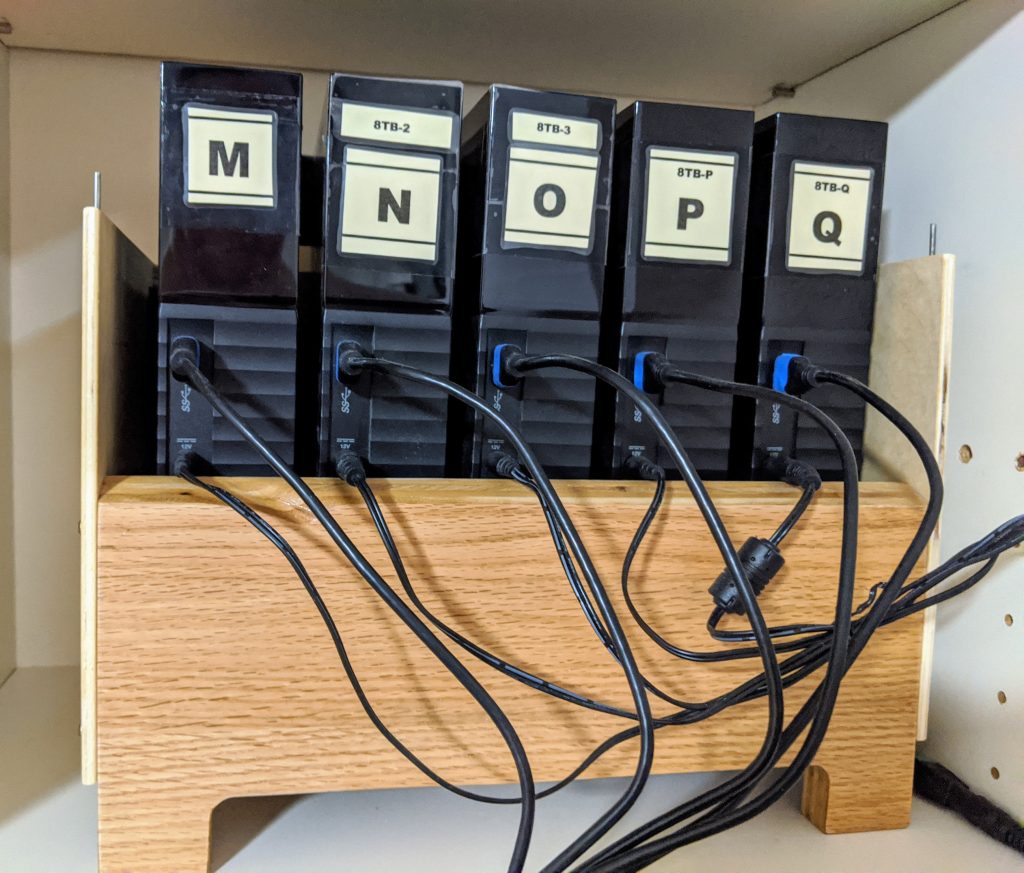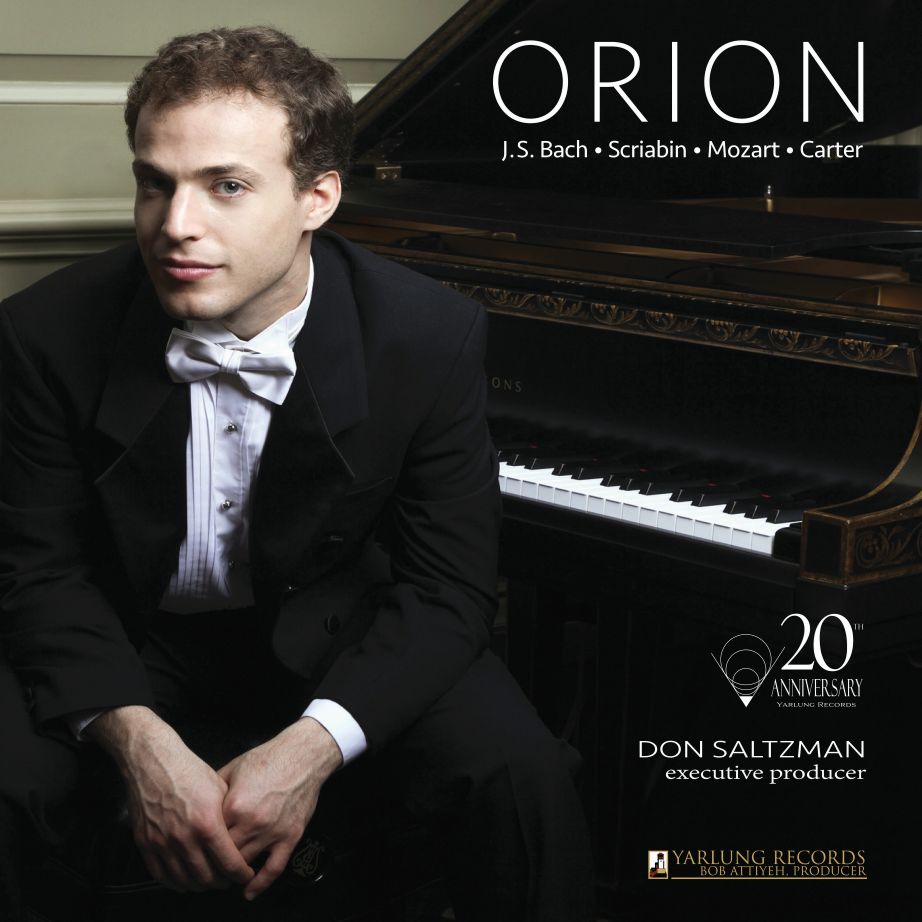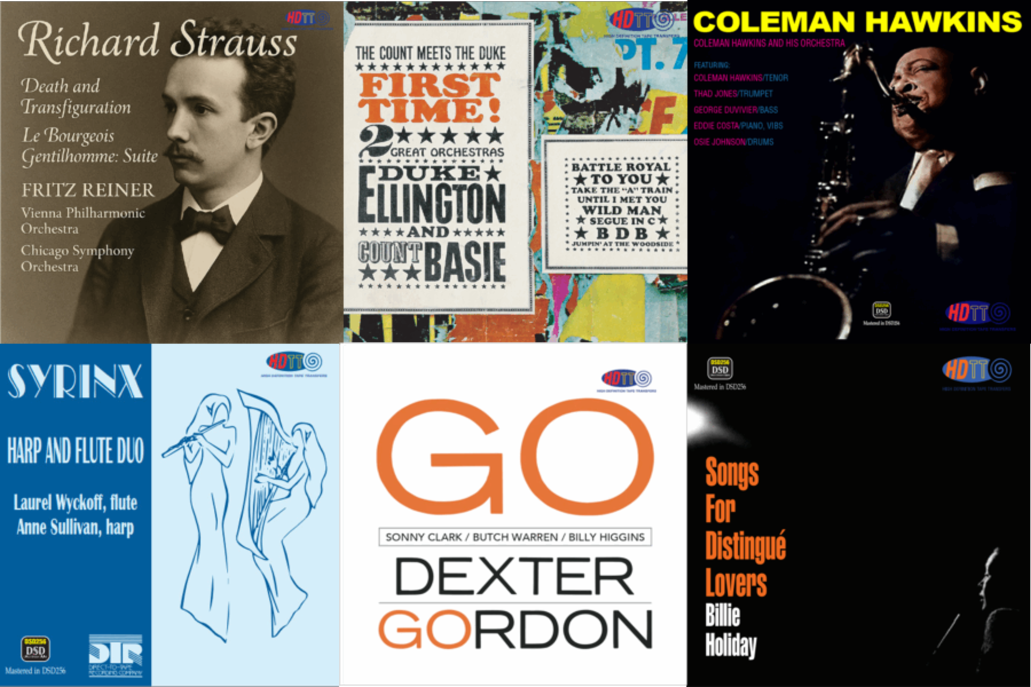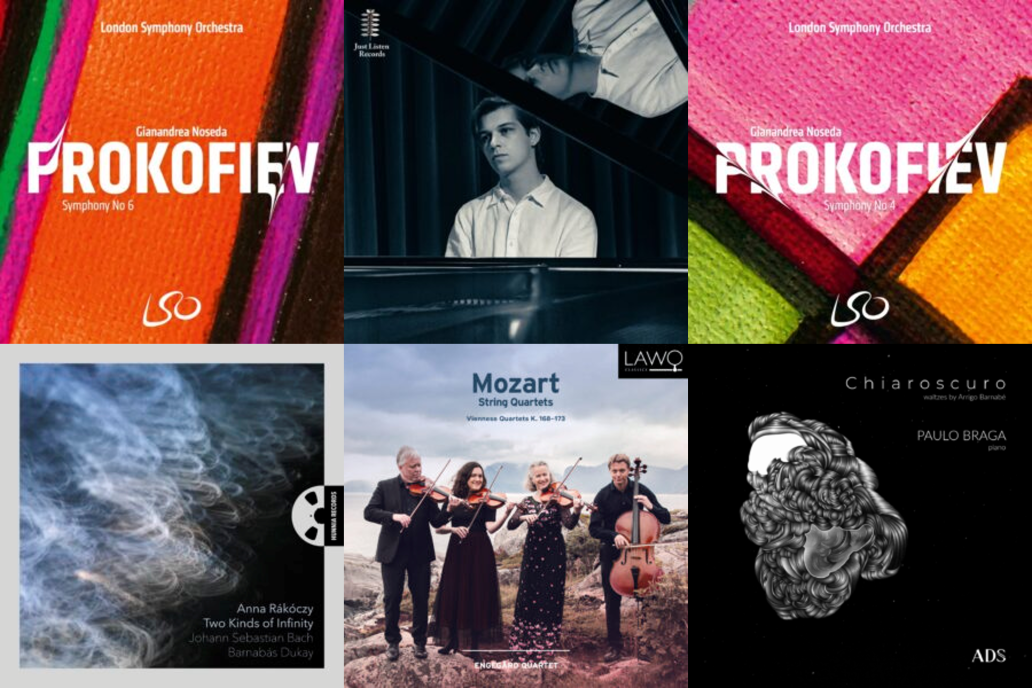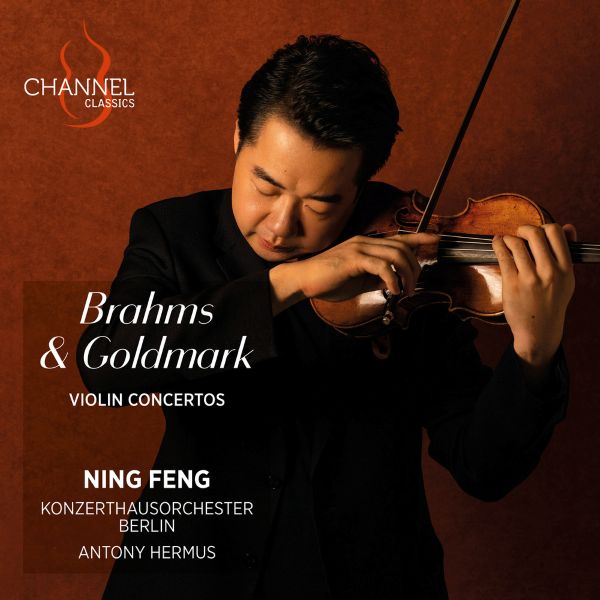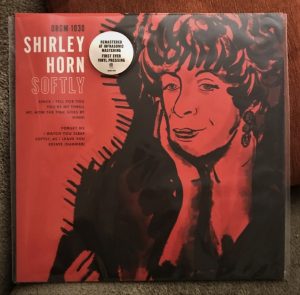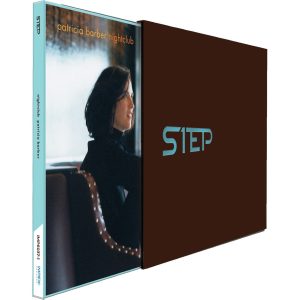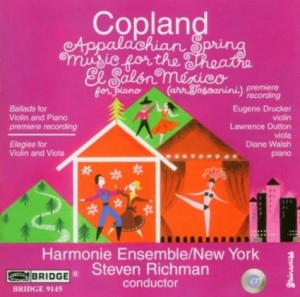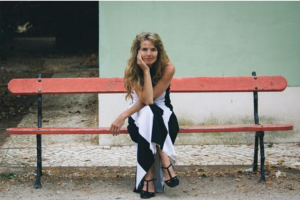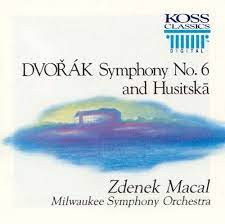With some of the best sonics you will ever experience, I'd like to introduce you to six recently released Pure DSD256 recordings from Eudora Records, Hunnia Records, and Yarlung Records. All of these albums are originally recorded directly to DSD256 and not to analog tape and then transferred to DSD. If you value the ultimate in recorded sound quality available with some of today's best available technology, these are albums you should add to your music collection. But only if you actually hear them in their Pure DSD256 resolution, which you can get only from NativeDSD.
And, while I enthuse over the absolute wonderfulness of the sonics delivered by each of these albums, they are even more worthy because of the excellent music and performances.
Mysterium, Noelia Rodiles, Oviedo Filarmonia, Lucas Macías. Eudora Records 2024 (Pure DSD256, Stereo, MCh) HERE
As much as I like the vintage jazz tapes transferred in Pure DSD256 by HDTT, such as the Art Pepper Meets the Rhythm Section about which I wrote recently (HERE), technology has advanced over the past 70 years. The new Pure DSD256 recordings directly off the microphones have a clarity and transparency of sound that improve on the vintage 15ips analog tapes. Electronics are quieter and with lower distortion, microphones are more resolving, more care is applied with cables and power supplies. These factors combined with DSD256 allow for a transparency of recorded sound that makes today the golden age of sound recording.
For classical music fans, the recordings by Gonzalo Noqué on his Eudora Records label are paradigmatic examples of great recorded sound—some of the best being done today. This new release, Mysterium, is an example of full orchestra and piano recorded direct to DSD256 with no PCM processing at all. It is recorded, edited and mixed purely in DSD (for the technical purists, the more precise terminology would be "PDM" with multi-bit PDM for mixing). In these Pure DSD256 recordings from Eudora Records, there is an utterly transparent quality to the sonics that I find compelling and addictive.
Of course, the great Spanish pianist Noelia Rodiles is always a special treat to hear. She opens this album with Julián Orbón's Partite No. 4, Symphonic Movement for Piano and Orchestra (1985), a masterpiece for orchestra and piano. And the sound quality is utterly transparent and compelling. Orbón incorporated into this single-movement work for piano and orchestra elements of the motet setting of O magnum mysterium by Tomás Luis de Victoria (1548–1611). It is an intense piece opening with unaccompanied brass setting out Victoria's chorale and a feeling of peace that returns in different ways throughout. The piano enters in mournful rage, conveying grief in all its tragic energy and sweetness.
Cloches (“Bells”), a concerto for piano and orchestra by Manuel Martínez Burgos (b.1970) was written in 2023 and was premiered on November 24 that same year by Noelia Rodiles with the orchestra and conductor on this album. This is the first recording of the work. Writes the composer, "This piano concerto explores the expressive possibilities of bells as carriers of messages over long distances. Through the spectral analysis of different bells from all over Europe, including the bells of Notre Dame de Paris, in this composition I propose a spiritual and magical dialogue between the piano and the orchestra."
Noelia Rodiles weaves magic throughout these performances. As ever, her playing is technically brilliant. But it is the warmth and humanity of her interpretations of the music that makes her performances (both here and in other recordings) so compelling.
Recording: August 23-25, 2023 & January 31-February 2, 2024, Auditorio Príncipe Felipe, Oviedo, Spain
Here are several of the albums of Noelia Rodiles on Eudora Records that I highly recommend to you. All are recorded and released in Pure DSD256 and available at NativeDSD.
New Worlds, Javier Laso. Eudora Records 2024 (Pure DSD256, Stereo, MCh) HERE
Pianist Javier Laso (b. 1975) opens this album with Federico Mompou's lovely and highly evocative Variations on a Theme of Chopin (1957). As described in the liner notes, "Uninterested in either avantgarde or narrative pretensions, and sharing an affinity for the piano with his Polish forebear, Mompou focused on a haiku-like miniaturism. Life in Paris had introduced him to the sonorities and audacity of Impressionism, as well as to Satie's desire to reinvent the musical wheel, but Mompou also drew inspiration from the landscapes of his native Catalonia, and borrowed folk tunes from the region that were also part of Javier Laso's childhood." I admit to being endlessly fascinated by Mompou's compositions. As with Variations, so many of his works are evocative miniatures. Not that they are short. No, it is because they compact so much meaning in so few notes. And phrasing is all. Get the phrasing wrong, and the compositions don't work. But get them right, as does Javier Laso, and they are just magical.
Complementing, and contrasting, with this opening work are pieces by Berg, Bartok and De Falla. Together, Laso's selections make for a compelling recital of twentieth century piano pieces. Full of nourishment is this album.
Alban Berg's first piano sonata follows. With it's first notes it sounds as though it might flow seamlessly from the Mompou Variations, but no. With that first discordant chord, one knows immediately that we are treading onto different territory. And the difference, the contrast is delightful. Not jarring. It seems almost a natural variation to Mompou's sensibilities, perhaps better said "an alternative." It is quintessential early Berg. Restless, searching, never quite settling, this work is elusive. Hints of Romanticism, the passing lyricism that transforms to something that is yet different, undefined, and unsettled. This is music that is intriguing, captivating, intellectually stimulating. It is the perfect illustration of Berg's appeal. And an excellent work with which to enter his music opus. But pay attention because in just 14 minutes, it's gone.
Manual de Falla brings us resolutely back to Spain with his energetic Fantasía Baetica (Andalusian Fantasy, 1919). Gone is the lush Impressionistic orchestration of Noches en los jardines de España (Nights in the Gardens of Spain). Replacing it is a more concise, incisive use of the rhythms of popular music. At times so concise it is acerbic. But Laso's interpretation never loses sight of the composition's modernity and originality. In so doing, he brings a freshness to this work that so often is swamped by other pianists' focus on the folk music rhythms that suffuse the work.
Awaken, music for Piano Trio by Haydn, Schubert and Ravel by Yugen Trio. Eudora 2024 (Pure DSD256, Stereo, MCh) HERE
An apropos title for a group of promising musicians embarking on their international performing career as a trio. Choosing such a diverse set of works around this common theme of "awakening" is a most promising entre. But even more promising is the excellent ensemble playing and high technical proficiency of the group.
The Yugen Trio was founded in 2018, earning several international chamber music competition awards in 2019-2021. But this is their first recording, as far as I know. And it is a most exciting premier. With a lively performance of Haydn's Piano Trio in A Major reflecting the jubilation, expectation, and joy towards the new day, the recital launches with great élan. Nicely played!
The transition to Schubert's youthful Sonatensatz in B-flat Major, places us in different territory. With the abruptness of the opening chords, and a richer tonality, we move to different musical setting while equally seeking what will be coming.
And then comes the unrestrained fantasy of Ravel's Piano Trio. For me, this was the pièce de résistance of the recital. A marvelous work delightfully and insightfully performed by the Yugen, with all the care and delicacy it deserves to fully contrast with the impactful, driving, highly charged sections of the work. Our performers shift smoothly, elegantly, from one mood to the other. All as the music demands. Just delightfully performed.
Recording engineer and producer Gonzalo Noqué gives us a remarkable sonic landscape in which to enjoy these performances. I have been listening and enjoying his recordings for a number of years, and I think this album is among his very best recordings to date. Again recording in the lovely natural acoustic of the Auditorio de Zaragoza, Sala Mozart, Zaragoza, Spain, Gonzalo has gifted these fine performers with a sound quality that enriches the listening experience most decidedly. That he has chosen to do all of this as a Pure DSD release, with no PCM processing, is a significant factor in giving us the immediacy and transparency of sound which makes this recording very special. Thank you!
Rachmaninoff Piano Concerto No. 2, János Balázs, Budafok Dohnányi Orchestra, Gábor Hollerung conducting. Hunnia Records 2024 (Pure DSD256) HERE
What a delightful new recording of this great warhorse! I am firmly of the opinion that I cannot have too many different recordings of this great concerto. And when a wonderful new recording comes my way, I celebrate. And this is truly a wonderful one. Recorded in Pure DSD256, it has the clarity and transparency of sound that only a Pure DSD256 recording delivers.
But importantly, this is a very nice performance. Does it exceed the performance qualities of some other recordings of this work that I admire? No. But it is good. It has it's own very distinct merits. And this is what is so very special about Rachmaninoff's Second Concerto. It lends itself to different interpretations, different styles of play, different sensibilities. And each performance gives me something new to hear and understand about this music.
Conductor Gábor Hollerung writes about this work, "If one were to describe the work with a single simile, the conquest of infinity would come to mind. This can be interpreted equally as the work's emotional dimensions, its dazzling virtuosity, its composer's exacting demands, its consistent dramaturgical contrasts, its theatricality in the best sense and, of course, its captivating realization of one of the most puzzling questions of Romanticism: glorification."
With so much content to encompass, no single performance will express it all. Here we have a dramatically Romantic interpretation that plumbs the poignancy of the brooding melody, but takes the dramatic moments head on, with urgency and directness of communication.
Pianist János Balázs (who Hollerung says can clearly be regarded as the heir to György Cziffra, a huge compliment) takes possession of his role with ease. He clearly has the technical proficiency needed to meet the huge demands Rachmaninoff creates for his soloist.
Recording session January 19-20, 2021, Pesti Vigadó, Budapest, Hungary
Sibelius Piano Trio (Double Album), music of Sibelius, Schissi, Wennäkoski, Saariaho, and Lefkowitz. Yarlung Records 2016 2024 (Pure DSD256, Stereo, MCh). HERE
This double album release from the Sibelius Piano Trio and Yarlung Records is an utter delight. It was recorded in 2016 to DSD256 and analog tape and released shortly thereafter on vinyl and CD in two volumes. The full content of those earlier albums is finally released in Pure DSD256, as originally recorded. A huge thank you is due to Yarlung founder, producer and principal recording engineer, Bob Attiyeh, for this release.
Now, every subtle gradation of sound and resonance and timbre is transparently present to the ear. The detail and the clarity is simply stunning. All in service to some glorious music and music-making by these three very accomplished Finnish musicians: Juho Pohjonen (piano), Petteri Iivonen (violin), and Samuli Peltonen (cello).
While the chamber music of Sibelius forms a core for this album, the twentieth century compositions by Argentine composer Diego Schissi (b. 1969) and American composer David S. Lefkowitz (b. 1964) provide even greater interest to someone like me who greatly enjoys contemporary music.
The Sibelius Trio moves easily between these contemporary works and the two trios of Jean Sibelius. As J.P. Markkanen writes in the accompanying booklet: "When they play Nene, written for them by Argentine composer Diego Schissi, you hear Latin musicians offering you South American sunlight and Argentine dance rhythms. When Sibelius Piano Trio performs Ruminations by David S. Lefkowitz, the Trio conjures Persian poetry, musical instruments including the oud, nose flute and the Eastern European Klezmer. Petteri, Juho and Samuli perform these works from the other side of the world from where they were born as fluently and seemingly effortlessly as they play celebrated Sibelius trios or modern classics by Finnish composer virtuosi Lotta Wennäkoski and Kaija Saariaho."
These are just a delight! And for me, the highlight of the album.
The Sibelius trios are youthful works written during the summers he spent vacationing with his brothers and sisters on various islands in off the southwest coast of Finland. The Sibelius siblings formed a trio. Sibelius played the violin, his sister Linda played the piano, and his brother Christian played the cello. As much enjoyment as these works must have given the Sibelius siblings to play together, we gain even greater benefit hearing them today in these excellent performances by this trio.
Takács Assad Labro. Yarlung Records 2024 (Pure DSD256, Stereo, MCh) HERE
This album is tour de force—it demonstrates of the marvels that can be achieved when talented performers and composers collaborate, when folks committed to highest possible excellence in sound quality are in charge of the production, and dedicated music lovers invest in funding the efforts. It is worthy of our time as listeners and the beneficiaries of these efforts.
This is a collection of contemporary chamber works for piano, strings, vocalization, and bandoneón. Buckle your seat belts—it's a challenging fun ride! The album includes compositions by Clarise Assad, Julien Labro, Bryce Dessner, Kaija Saariaho, and Milton Nascimento—all of whom are contemporary composers. All of whom are well worth one's time to become acquainted.
The famous Takács Quartet has given us many wonderful recordings over fifty years since its formation in the 1970s at the Franz Liszt Academy in Budapest by Gabor Takács-Nagy, Károly Schranz, Gabor Ormai and András Fejér. András remains cellist to this day. Gradually other original members have retired from performance but the groups has remained a vital part of our musical landscape as it has evolved with new members.
They are joined in performance by Clarice Assad (pianist and composer) and Julien Labro (accordion and bandoneón). Julien Labro is a world famous French accordion player based in New York, but he is also known for his virtuosity on bandoneón, which he wanted to feature with string quartet in these new compositions. Clarise Assad instigated this recording project with a phone call to Yarlung founder and producer, Bob Attiyeh, who describes the call this way:
"Bob," Clarice said, "I have an idea… I wrote a piece for Takács Quartet and bandoneón virtuoso Julien Labro. It's a wild piece. The five of them have been performing it all over the world on tour, and I think you would like it. Actually, I know you would like it. Julien wrote a companion piece, and the third work is by Bryce Dessner. I think you know Bryce; he lives in Paris. What a trio! I want you to record these three works, plus another piece I have in mind for violin and piano. When can we do it?"
Clarise Assad
And, thus, a recording project commenced. And the result is outstanding: an immensely enjoyable collection of new music, exciting performers, and excellent recording sonics.
It was important to me that we record natively in DSD 256fs as well as on our analog tape format. The liveliness and precision of this playing warranted as transparent a sound as we could deliver, and DSD did not disappoint!
– Bob Attiyeh, Yarlung Records
A further note about these Pure DSD256 releases
Each of these albums has an immediacy and transparency of sound that I hear only with Pure DSD256 recordings. They are available only from NativeDSD. The albums from Eudora Records are especially notable because they have been mixed in DSD (technically, PDM) which we used to believe could not be done. NativeDSD's Tom Caulfield does the final editing and mastering for Eudora using Signalyst HQ Player Pro and the mixing instructions provided by Eudora's principal, Gonzalo Noqué. No PCM ever touches the original DSD256 recording tracks. If you're inclined to learn more, I invite you to explore these earlier articles in which I've explored this important topic:
Mixing in Pure DSD - No PCM Allowed
Pure DSD256 Large Orchestra Recording from Eudora Records - With Free Sample Download
Native DSD has released a sampler of Pure DSD recordings, made up of tracks from 8 albums released in stereo Pure DSD256. This is an easy way to explore the sound quality that is being achieved if your DAC can play DSD256. "All songs included in this compilation album were recorded in DSD 256 and delivered to us from the original edit master... We classify Pure DSD albums as recordings where mixing and balancing are performed in the Analog or DSD domain prior to digitizing."
Keep in mind that DSD recordings are often mastered with a bit lower gain that PCM recordings due to the massive dynamic range they can cover. Don't be fooled by then when comparing to your PCM files.
Pure DSD Recordings, Vol. 1 from NativeDSD, 2024 (Pure DSD256) HERE
And if you want to purely overdose on Pure DSD256 recordings that I've recommended in the pages of Positive Feedback over the past few years, here's a search link that should catch most of them: Rushton's Pure DSD256 recording recommendations. Enjoy wading in!
All images provided by the respective recording labels.




